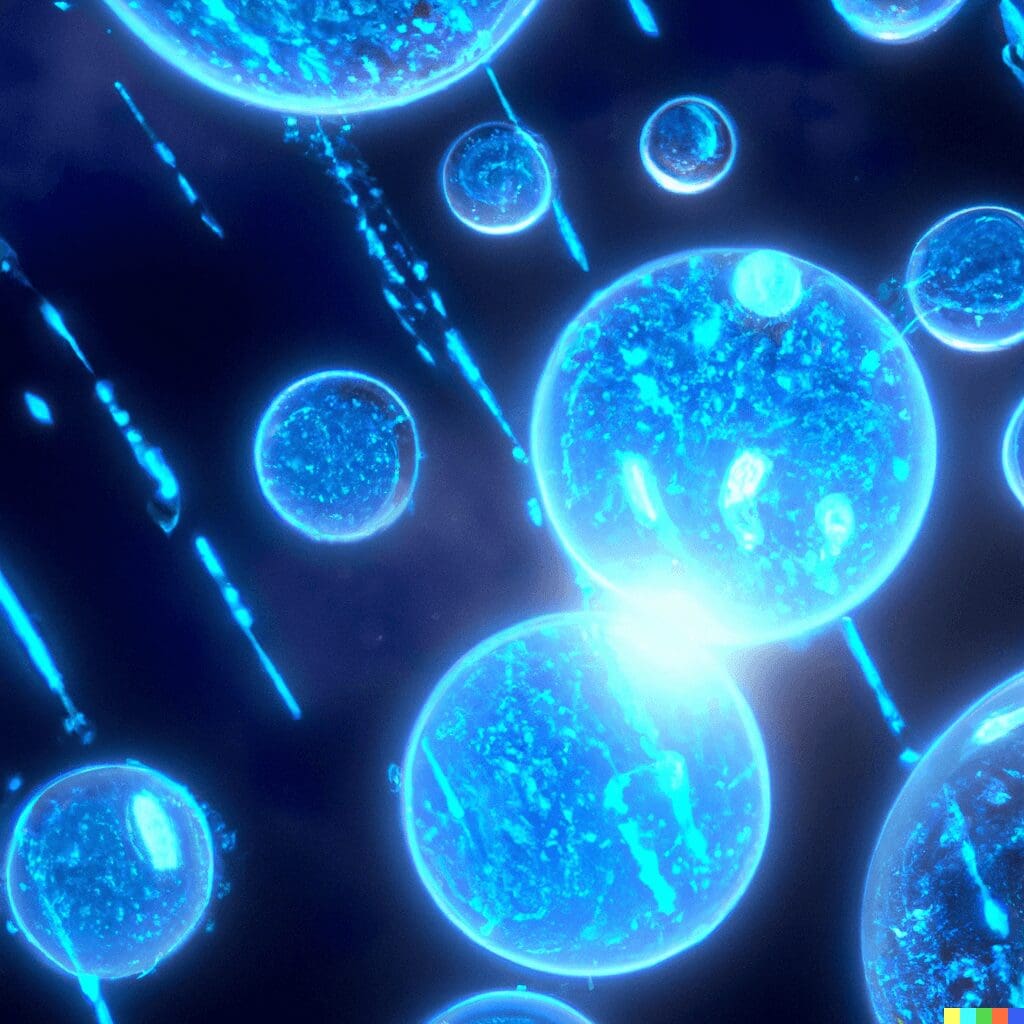The search for ultra-transparent material to manufacture microfluidic chips is not a coincidence. The ultra-transparency of the materials lends itself very well to microscopy, especially for biological applications. In this short review, our expert team presents a simple protocol for staining cells in chips. This protocol also works very well for spheroids and organoids.
You may think that in order to stain cells cultivated in a microfluidic chip, all you have to do is stain them before they are loaded on a chip. However, this is not always possible when the dye to be used is toxic for the cells. Other times, it is newly formed cells or tissue that you want to stain. It is therefore necessary to know the key steps that will allow you to succeed in your cell labelling.
An essential step prior to the staining stage is the phase change. The phase change consists of removing the layer of oil and surfactant present on the surface of the drops in order to bring another fluid (drug or staining solution for example).
Phase change on-chip protocol
Material
- 20% PFO in HFE7500 solution to destabilize the surfactant (It is possible to use a 50% PFO solution in HFE7500 if the oil in the chip has a high surfactant percentage (>1%))
- Oil syringe
- Mix solution for staining (see the followed section)
Perfusion with oil
PURPOSE: decrease the surfactant concentration by dilution
- Disconnect the chamber outlet
- Connect the oil syringe avoiding air bubble
- Disconnect the inlets (chamber, junction and cells) and connect tubing for the outlets
- Inject approximatively 500 µL of oil (or more) (at medium flow rate, i.e. about 100 µL/min)
Perfusion of PFO 20% in HFE7500
PURPOSE: destabilize the surfactant
- Remove the oil syringe
- Connect the PFO syringe
- Inject approximatively 300-400 µL of PFO (at medium flow rate, i.e. about 100 µL/min)
Perfusion of the aqueous phase
In our case, these will be solutions for marking the cells using the following protocol.
For all stages of connection and disconnection, the Darwin Microfluidics team advises you the use of valves and an air bubble trap to facilitate this protocol. You can find all Darwin Microfluidics products right here.
Staining of cells cultivated in microfluidic chip
Material
- 4% Paraformaldehyde (or PFA) solution to fix cells
- Triton x100 solution for permeabilisation of cells (At 1% in PBS)
- 1% BSA in 5% FBS in PBS solution
- Phosphate buffered saline (or PBS) for washing
- Dye or antibodies solution to stain cells
Fixation of cells
PURPOSE: PFA allows to stop the cell reactions and maintains their biological state (shape, cell cycle, …)
- Connect the PFA 4% syringe (approximatively 160 µl)
- Respect 20 min of incubation (one the infusion is finished)
- Wash with PBS (approximatively 160 µl)
Permeabilisation of cells
PURPOSE: Increase the pore size of the cell membrane in order to encourage the entry of dyes. Triton x100 is a detergent which is able to attack lipids of the cell membrane
- Connect the Triton 1% syringe (approximatively 160 µl)
- Respect 5 min of incubation
- Wash with PBS (approximatively 160 µl)
Blocking of non-specific sites
PURPOSE: The BSA (in FBS solution) complexes with proteins in order to promote competitive interactions between proteins and markers
- Perfusion of 1% BSA in 5% FBS in PBS (approximatively 160 µl)
- Incubation 60 min (not strict)
- Wash with PBS (approximatively 160 µl)
Dye fixation
PURPOSE: This is the final step of staining. This step have to be carried out in the dark !
Numerous markers are available on the market and can meet all your needs whatever your application. In this step we take as examples the most common markers.
> Antibody I anti-cadherin E and antibody II anti-goat [488] to display cell-cell junctions in green (diluted in BSA-FBS solution)
> Phalloidine is used to diplay the polymerised actin in red (diluted in BSA-FBS solution)
- Perfusion of Antibody I anti-cadherin E diluted at 1/1000 in BSA-FBS solution (approximatively 160 µl)
- Incubation 60 min
- Wash with PBS (approximatively 160 µl)
- Perfusion of Antibody II anti-goat [488] diluted at 1/1000 in BSA-FBS solution (approximatively 160 µl)
- Incubation 60 min
- Wash with PBS (approximatively 160 µl)
- Perfusion of Phalloidine diluted at 1/2000 in BSA-FBS solution (approximatively 160 µl)
- Incubation 30 min
- Wash with PBS (approximatively 160 µl)
Note that dilutions are made in accordance with the protocol of the supplier.
To easily handle your solutions, the experts of Darwin Microfluidics advise you to use tank racks and microfluidic reservoirs for Eppendorf tubes. Find the full range of tanks and reservoirs from Darwin Microfluidics right here.


